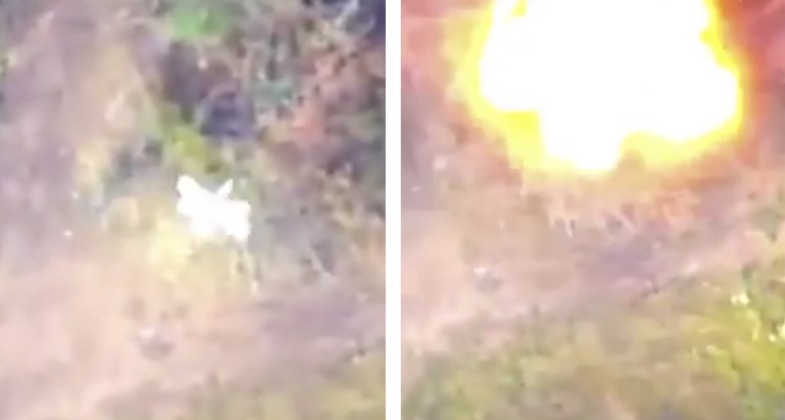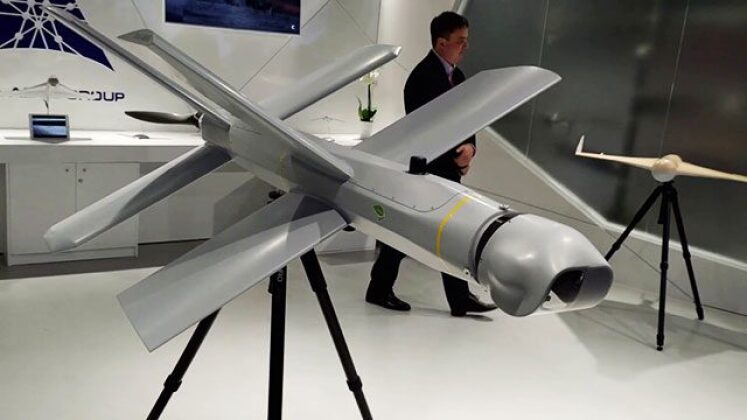News
Latest Russian Strikes Caught on Screen: Iskander Takes Out Infantry, T-80 Neutralises Bradley, Lancet Drones Destroy Artillery, Tanks and EW Centre
Amid escalated hostilities in Eastern Ukraine as the Ukrainian Army has attempted to launch large scale offensives against Russian positions from early June, some of the latest kills gained by Russian forces on the frontlines have been captured on film and publicised providing valuable insight into the nature of the ongoing engagements. One of the most notable was a strike by an Iskander-M ballistic missile system which was publicised on June 30 showing a strike on a bridge in Ukraine’s Kherson region, which accordingly to local sources killed 30 personnel. The use of the Iskander-M indicates a high value attributed to neutralising the bridge at that particular time, since with the bulk of the costly assets have been conserved for potential use in a wider war with NATO with those deployed to Ukraine used sparingly for high priority targets. Another possibility is that the nature of the unit targeted made the 30 personnel killed particularly important. The strike closely coincides with a missile attack on a pizza parlour in Kramatorsk, Eastern Ukraine, footage from which shows foreign military personnel present. Unconfirmed reports indicate that the parlour was a meeting place for foreign military contractors from Western countries, who have played an increasingly central role in the war effort alongside active duty personnel from Western countries such as British Royal Marines of which hundreds have been deployed for high risk frontline operations. Iskanders were notably also used in mid-April to neutralise positions of Georgian Legion contractors in Donetsk, Eastern Ukraine, with the unit considered a high priority due to both its combat record and to Russian allegations of serious war crimes.

On June 29 footage of a Russian T-80BVM tank on the frontlines showed the vehicle engaging a Ukrainian Bradley fighting vehicle at a long range of 9.5km. The development came as Bradleys have played a growing role in Ukrainian offensives, and despite taking heavy losses confirmed by drone footage stocks of the vehicles are being replaced rapidly by new shipments from the United States. The Bradley has since its early development been criticised for its limited armour protection against advanced anti tank rounds, with the T-80BVM capable of penetrating its armour with little difficulty. The T-80BVM first entered service in 2019, and was supplied through deep refurbishment of Soviet-built T-80BV tanks which Russian inherited in very considerable numbers. Notable improvements included integration of the 2A46M-4 main gun and a new 1250 horsepower engine as well as new fire controls, including thermal slights, and addition of Relikt explosive reactive armour.
Although the T-80 was the most capable Soviet tank class to enter service, and the most expensive in the Russian fleet, numbers were reduced in the 2010s to lower the overall operational costs of Russian armoured units, with T-72Bs with broadly comparable capabilities being much cheaper to field. T-80s are nevertheless prized for their higher mobility and better suitability for Arctic weather conditions, with other T-80 variants such as the T-80U also having significant advantages in their armour protection over T-72s. The T-80BVM was filmed earlier in the month neutralising a Ukrainian reconnaissance team in Donetsk, with the unnamed commander of the tank’s three man crew reporting: “We got the coordinates, the target was enemy manpower, up to 10 people. Literally, in 15 minutes we drove up to a closed firing position, fired eight shells, there was a hit.” The tanks have played a significant role in Ukraine despite their relatively small numbers.

An asset playing a growing role in Russian operations in recent weeks has been the low cost Lancet drone, with footage released on June 1 showing the aircraft neutralising two American supplied M777 155mm howitzers in Kherson. The M777 is one of the most valuable artillery pieces in the Ukrainian inventory, and the guns were reportedly increasingly well camouflaged due to the growing dangers posed by drone strikes. When equipped with costly Excalibur satellite guided rounds the precision targeting capabilities of American artillery pieces has posed a major challenge to Russian forces on the frontlines. American artillery has proven among the most reliable in the Ukrainian inventory, where European guns and particularly those built in Germany and Italy has consistently fallen far short in its quality and at times been totally unusable. A day after the release of footage of a strike on the M777s, further footage showed Lancet drones targeting a Ukrainian tank and an electronic warfare station also in Kherson.

Recent Western reports have consistently identified the Lancet as a major challenge to Ukrainian Army operations, with British press on July 1 reporting a successful strike on a French supplied Caesar 155mm gun, “blasting it to pieces” as observed by the Telegraph. The outlet cited Ukrainian Defence Ministry sources observing that Russia had enlarged its arsenal of low cost drones, praising the capabilities of the Lancet and warning that expanding arsenals of such aircraft was posing a significant challenge on the frontlines. The single use ‘suicide drones,’ as they are often referred to, carry warheads which detonate upon impact and can be fielded for a small fraction of the cost of cruise or ballistic missiles. British estimates indicate a cost of just $35,000 per aircraft making them far cheaper than the longer ranged and more advanced Shahed 136 suicide drones previously supplied by Iran.












